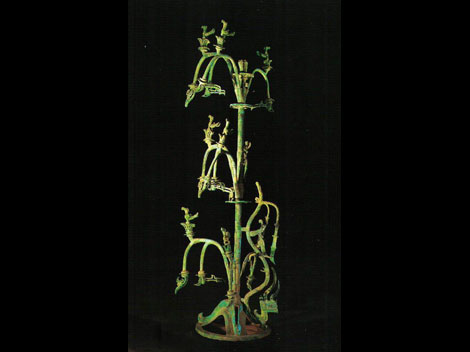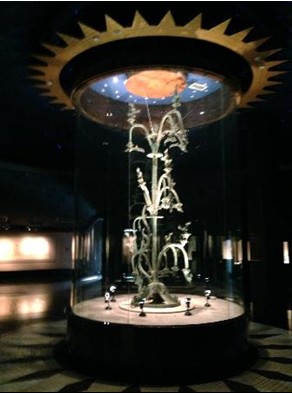
Visitors view a bronze tree excavated from the Sanxingdui archaeological site at the Sanxingdui Museum on April 13, 2005 in Guanghan of Sichuan Province, southwest China. Some of the restored relics will be shown during the May Day holiday at the museum. The 3000-year-old Sanxingdui ruins are recognized as one of the most important ancient remains in the world for its enriched and vast cultural contents. The first Sanxingdui relics were discovered by a farmer in 1929 and excavation has continued ever since and attracted lots of archaeologists. In 1986, two major sacrificial pits were found and they aroused worldwide academic attention. The unique culture that produced these artifacts remains a mystery, because no texts have been found, nor is there any mention of this culture in the records of other countries. Analysis of the relics indicates sources similar to those of other cultures along the lower reaches of the Yangtze River.

Sanxingdui is an enormous city, covering some 3 million square meters falling within the fortified wall that surrounds it on three sides.
We Recommend
